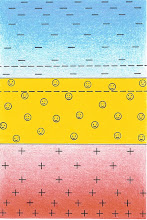Thursday, June 23, 2011
Genetically-Engineered Flies Prove That a Human Eye Protein Has Magnetoreceptive Characteristics
The journal Nature Communications published an article this week that supports the hypothesis of human magnetoreception. Steven Reppert and colleagues at the University of Massachusetts Medical School did a study in which they genetically engineered fruit flies (Drosophila) to produce a human eye protein called cryptochrome. This protein is known to be important in circadian clock regulation along with light-dependent magnetoreception. Normal Drosophilia flies have magnetoreceptive ability that can be behaviorally tested in a lab. Flies that are genetically engineered not to produce cryptochrome lose their magnetoreceptive ability. In this experiment, flies that were genetically engineered to produce the human (not fly) version of cryptochrome had magnetoreceptive ability similar to normal flies.
It’s important not to get too excited about this experiment. The study did not show that humans have magnetoreceptive ability. It only showed that human cryptochrome can give magnetoreceptive ability to Drosophilia. The fact that humans have this magnetoreceptive protein doesn’t imply that any people actually use it for navigational purposes. It could be a vestigial protein, an evolutionary leftover that has no function, like the tailbone or appendix.
The authors of this study suggest that “[a]dditional research on magnetosensitivity in humans at the behavioural level. . .would be informative.” I agree, and point to my paper as something I hope to guide future research.
Here are some links to nontechnical articles that talk about this experiment:
http://www.bbc.co.uk/news/science-environment-13809144
http://www.redorbit.com/news/science/2068170/human_retina_can_sense_earths_magnetism/
http://www.geekosystem.com/flies-magnetic-fields-protein/
http://www.nytimes.com/2011/06/28/science/28magnet.html?_r=1
Subscribe to:
Post Comments (Atom)


No comments:
Post a Comment